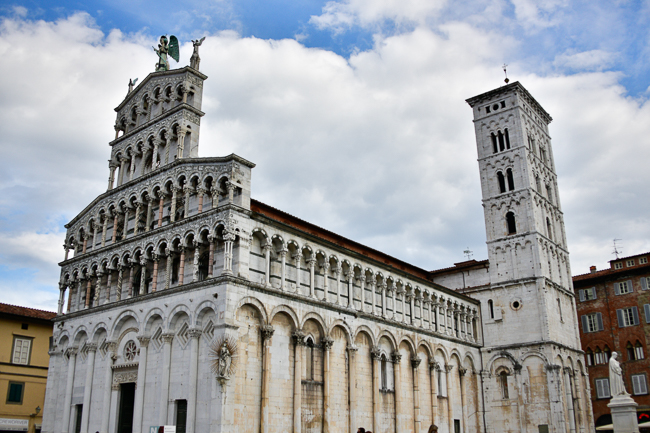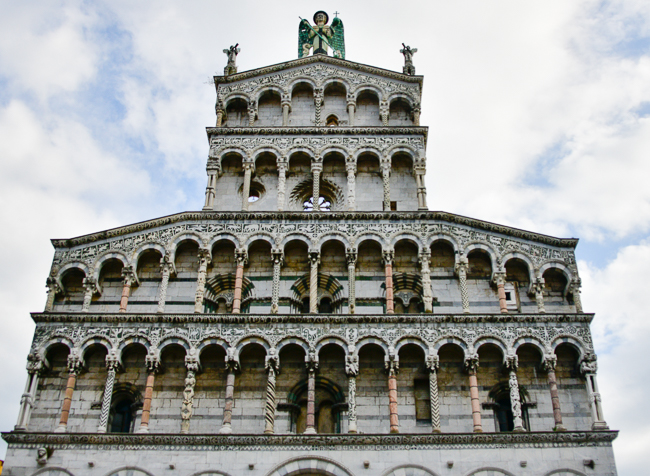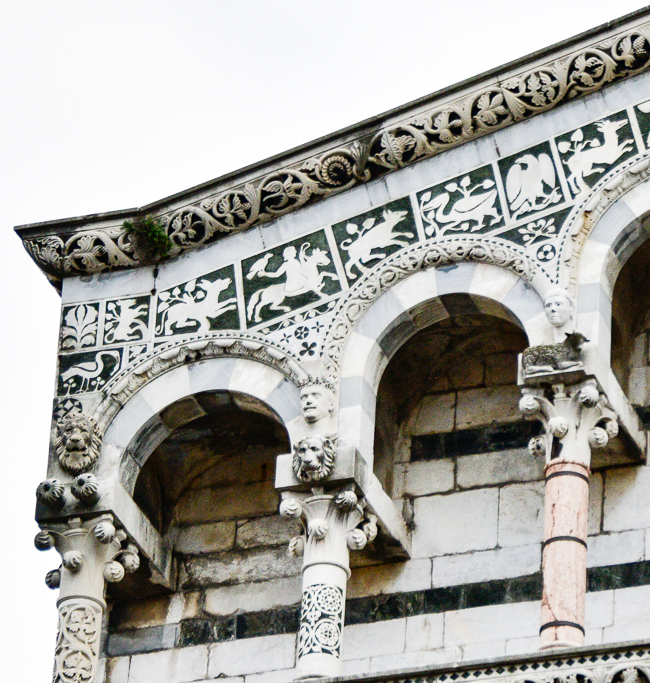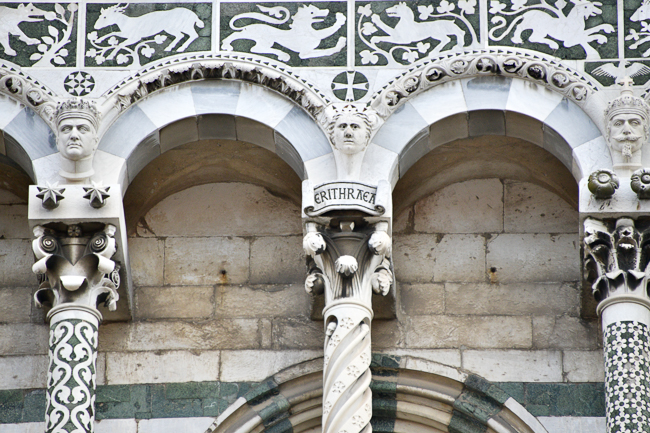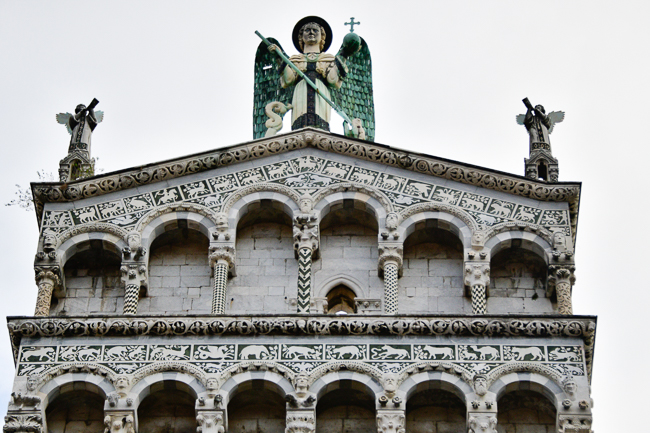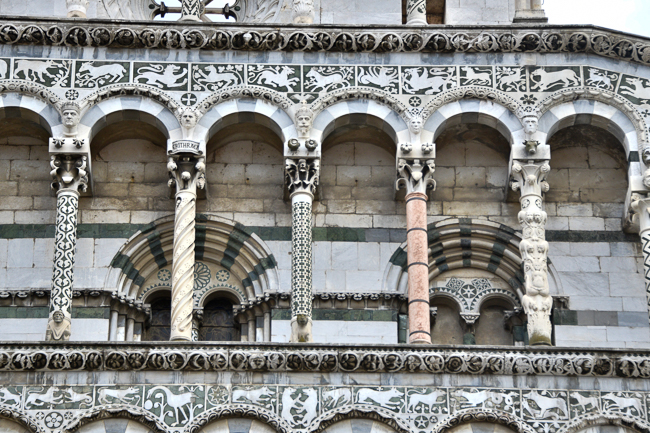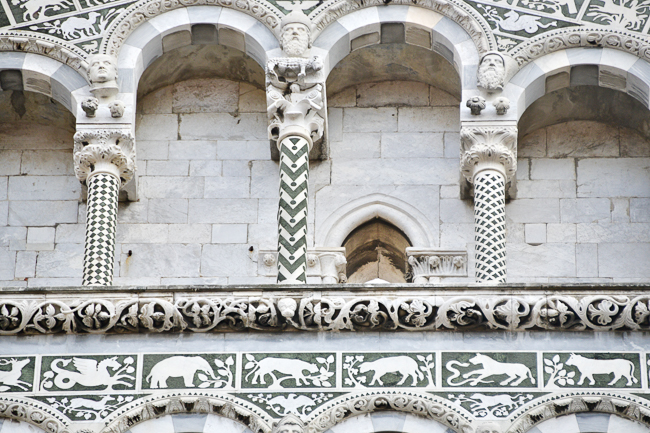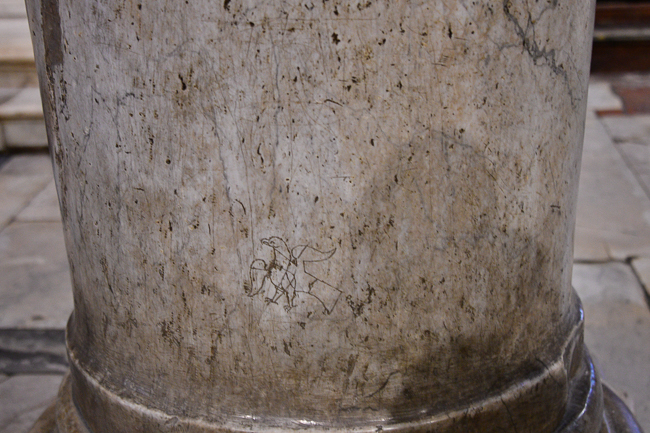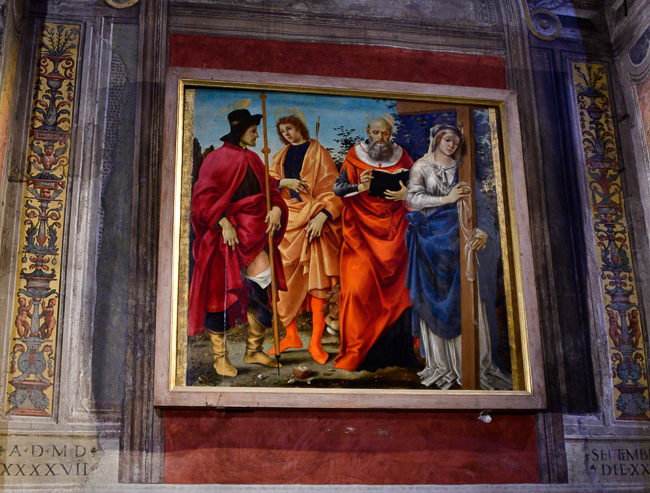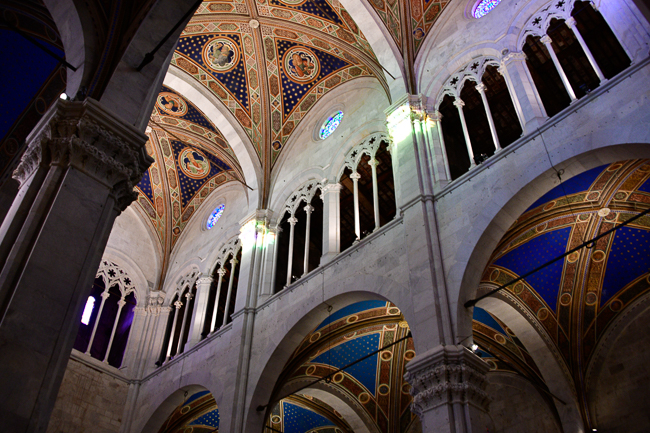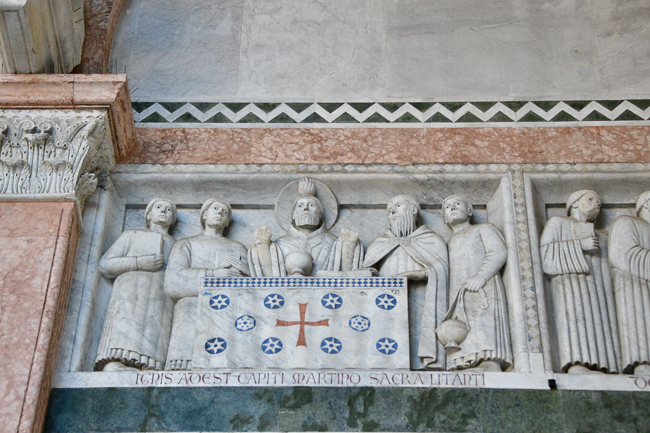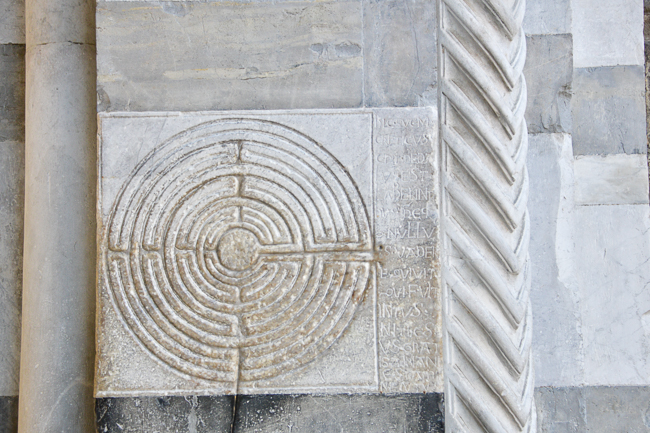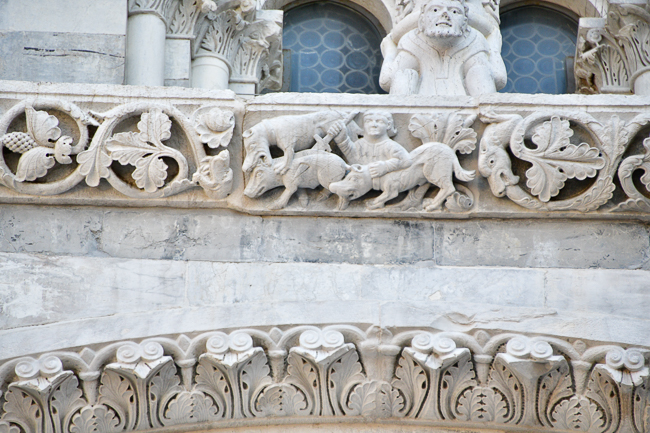November 2022
San Michele in Foro is a Roman Catholic basilica built over an ancient Roman forum, dedicated to Archangel Michael.
The church is mentioned for the first time in 795 as ad foro (in the forum). The church was rebuilt in 1070 under the orders of Alexander Pope II.
What takes one’s breath away before ever entering the church is the facade. The facade dates from the 13th century with alterations done sometime in the 19th century.
Little is actually known of the iconography and sculptures of the facade.
The spandrels of the arcades are decorated in a profusion of ornamentation with geometrical and figured inlay motifs that appear to relate to patterns of eastern origin that were used in the famous silks of Lucca.
Lucca produced magnificent silk fabrics in the 8th century CE. This city became very prosperous through its trade in silk fabrics during the Middle Ages and was well-known for its merchants and luxury artisans.
Lucca specialized in high-quality silk fabrics such as drappi auroserici (fabrics made of a mixture of silk with gold or silver threads). The motifs used in their fabric design expanded from the 12th to the end of the 14th century, incorporating Muslim, Byzantine, and even Chinese motifs.
From 1375 a more specific Italian style that featured Italian flowers, vine leaves, and naturalist themes appeared. These included a myriad of animals, as well as romanesque scenes, and hunting scenes.
The church was restored in 1866 with a pretty heavy hand. The columns were replaced and some of the heads were replaced with portraits of contemporary characters such as Garibaldi, Pius IX, and Cavour.
Certain columns are inlaid in a manner that also reflects an Eastern influence other columns are sculpted in what appears to be a Lombardesque style.
On the summit, flanked by two other angels is a statue of Saint Michael the Archangel.
*
The front entryway has a sculpted architrave resting on pinned capitals decorated in Corinthian style.
On the architrave is a carving teeming with real and imaginary creatures and in the center, you can see Saint Michael slaying the dragon with a spear.
The eight-wheel rose window is also important. It is not in keeping with the times and adds to the notion that the facade was done over many eras.
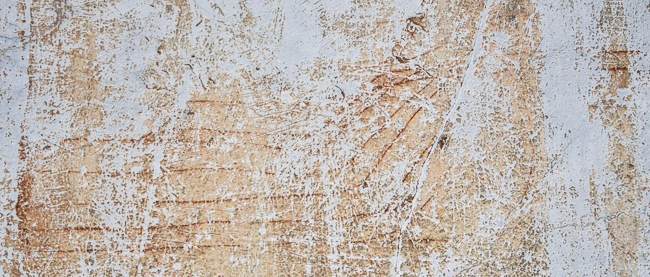
On the south side, medieval graffiti of ships and cities of the East testify to the use of the square as a market.
Should this not be enough the interior contains the Pala Magrini a 1483 painting by Italian artist Filippino Lippi.
The painting was done while Lippi was an apprentice in Sandro Botticelli’s workshop, it shows Saint Rocco, Saint Sebastian, Saint Jerome, and Saint Helena the Empress.
The paintings’ bright colors are a tribute to the quality of doing work in Tempera. Tempera is an ancient medium, having been in constant use in most of the world until it was gradually superseded by oil paints during the Renaissance.
True tempera is made by mixture with the yolk of fresh eggs, although manuscript illuminators often used egg white and some easel painters added the whole egg.
As I mentioned the columns were altered in the 1860s. Here is a diagram of who is who on the church today.
San Martino
There is another, lesser-known church in Lucca that is in the same style and of the same period as San Michele and that is San Martino.
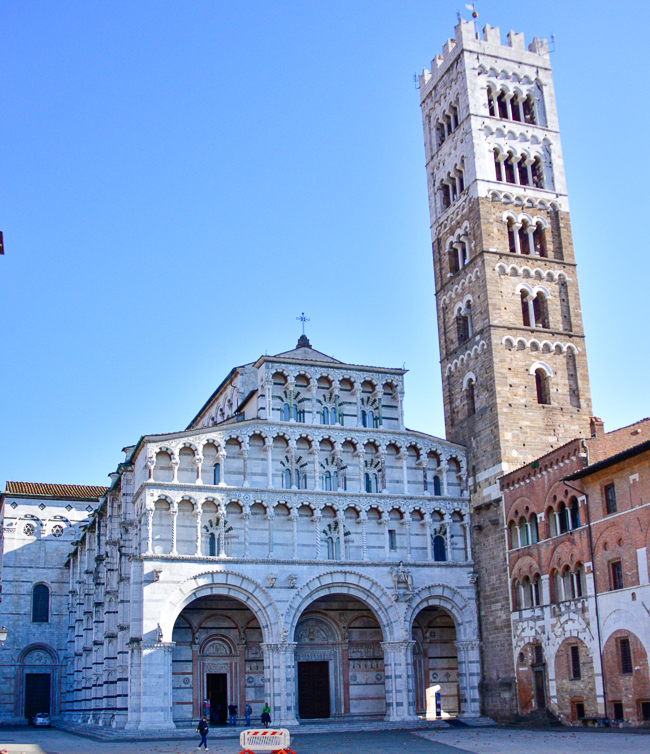
The facade of the San Martino is a version of the more complex San Michele facade, with evident asymmetries, and a contrast of full and empty spaces.
Consecrated in 1070 by Pope Alexander II, formerly the Bishop of Lucca, the exterior was further ornamented in the 1200s and is what you see today. The interior of the Duomo is heavy with Late Gothic influence and decorated in the style of the 14th and 15th centuries.
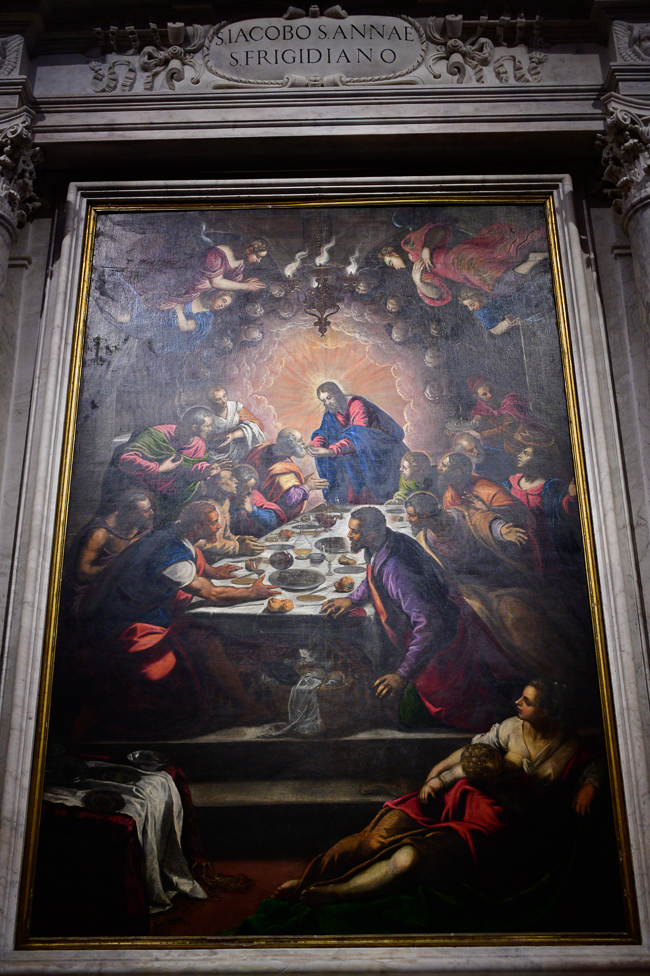
In San Martino, one can find the Last Supper of Christ painted by the famous Venetian painter Jacopo Robusti, known as Tintoretto. This was his last work, and he was aided by his son Domenico. The painting is dated 1594, the year of his death. – (Sadly it is horribly lit)
There are over 100 churches in Lucca. Many are no longer in use or have been repurposed for one use or another, these are two of the more spectacular architecturally.
